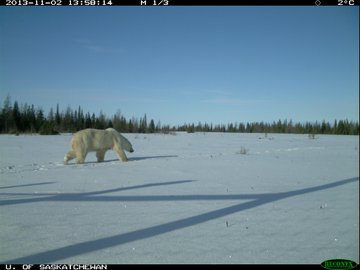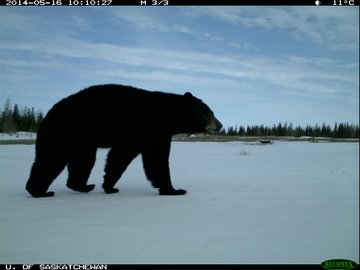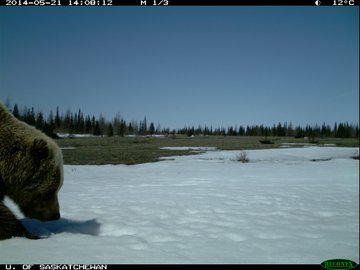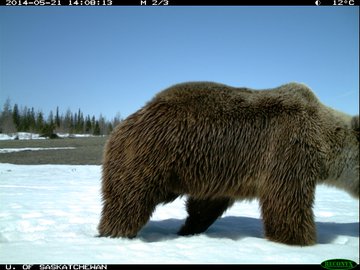Kill those coyotes, at your own possible peril
Dennis Jensen
I first saw the coyote as it emerged from the big swamp below my tree stand. It was the Vermont firearms deer season. He had good size and wore a brilliant, off-red-gray coat. He was on the move and was coming my way, moving at a rapid pace. When the big predator passed my stand, at a distance of just 10 yards, his head went behind a big oak and I raised the rifle and found him in the scope. To this day, I am amazed that I got away with that much movement, and that close, to an Eastern coyote, an animal with keen vision, hearing and a phenomenal sense of smell. And, no, I did not pull the trigger. I had no intention of pulling the trigger; I just wanted to get an up-close look at a rarely seen animal, one which I happen to hold in great esteem.
Coyote PHOTOGRAPH BY JOHN HALL, VT FISH & WILDLIFE DEPT
Eastern Coyotes (25 to 55lbs)are larger than Western Coyotes (20-35lbs),,,,
Eastern Coyotes have anywhere up to 25% Eastern Wolf genes, up to
8% domestic dog genes and anywhere up to 90% coyote genes)
Unfortunately, that view is not shared by many of my fellow deer hunters. In fact, I would venture to say that probably most deer hunters would have put a bullet through that coyote’s chest.
I have been fortunate enough, dare I say lucky enough, to have had a number of close encounters with coyotes over the past 30 years. I have called them in with a variety of turkey calls during both the spring and fall turkey hunts, and have seen them during deer season. One early May morning, in fact, while seated behind a homemade ground blind, I had a once-in-a-lifetime experience.
With a hard wind blowing across an enormous field, I placed an older, molded hen decoy out in front and was struck by how that decoy bobbed back and forth, lifelike, with the wind. About an hour in place, I saw a coyote cross the field in front of me, perhaps 200 yards away. He walked off, out of my line of sight. Then, he re-emerged crossing the field right in front of me. At one point, at about 40 yards away, that coyote stopped and seemed focused on something in the opposite direction. He looked that way for a minute or so. What the heck?
Then, in a flash, he was upon that decoy with a quickness that dazzled me. But when he struck the decoy and it flew off the stake that held it in place, the coyote knew that something wasn’t right and ran off, with great speed. Telling that story a few times to other hunters, I was asked, by each one, did you shoot it? No, I said, I did not. They then wanted to know why I did not.
This killing of coyotes and the passion behind that killing came in loud and clear at two deer hearings I attended in February 2005. No other animal comes under more derision than the coyote, largely because many, if not most, deer hunters believe that coyotes kill far too many whitetail deer.
Put a bounty on them, give a free license to any hunter who kills 10 coyotes, were two proposals to deal with the coyote “problem,” put forth by two hunters at the hearing.
“As far as coyotes go, we ought to kill them all,” a man from Brandon yelled out.
Whether they like it or not, the Eastern coyote is here to stay. They can be legally hunted 365 days a year, and history has shown that hunting, bounties, snaring and trapping has little effect on the population.
I wrote a column about what came out of those hearings titled, sarcastically, “Kill all them coyotes.” I wrote that the emergence of coyote hunting tournaments at the time gave hunters the image of bloodthirsty killers who are bent on going after a predator out of pure hate. Under current law, coyotes can be hunted year-round and there is no limit on how many of these predators can be taken.
Boy, did the poop hit the fan as the hate mail rolled in, calling me nasty names, some of which cannot be repeated in a family newspaper.
But I went even further. I said that an open season on coyotes was wrong, sad and ineffective. Wildlife biologists admit that coyotes do take deer, but they also subsist on a wide variety of other foods. Biologists also believe that the current view, held by many hunters, that coyotes kill so many deer that they threaten the existence of our deer herd is not supported by biological evidence.
So, the question that begs to be asked is this: Why persist in a war against coyotes when killing them appears to have no impact on their numbers?
Yet, the Big Bad Wolf, now the Big Bad Coyote “problem” continues. We will talk about that later in this report. The issue really came to a head in February 2005, when the three-day “1st Annual Howlin’ Hills Coyote Hunt,” with headquarters in Orwell, was held.
And this had to be the saddest nugget to come out of the tournament: It was announced that a cash reward — I believe it was $100 — would be paid to the hunter who brought in the “smallest” coyote. It doesn’t get much sadder, more pathetic, than that.
A group of people showed up at the tournament headquarters protesting the hunt, and it received daily coverage in newspapers around the state, including photos of dead coyotes laid across the blood-splattered snow.
The outcry over that 2005 coyote tournament was pretty loud, and even the Vermont Fish & Wildlife Department took a position. Then-Commissioner Wayne Laroche told the Vermont Press Bureau that he believed the tournament was a bad idea.
“You can hunt coyotes all year round,” Larouche said. “But this might not be good for hunting and we want to discuss with them (the people sponsoring the tournament) our concerns about the public perception of what’s going on.”
I contacted the current commissioner of Fish & Wildlife, Louis Porter, to get his view on coyote hunting tournaments in Vermont. His response was very similar to what Larouche had to say. Porter said that Fish & Wildlife does not endorse any coyote hunting tournaments.
“Our position is, we don’t support, endorse, encourage or participate in them,” he said. “They’re legal under state law. We don’t regulate them or oversee them. And I’ve heard, clearly, from some hunters who don’t like the image of hunting they generate, either.” Porter also said that, from what he has heard, coyote tournaments of late “haven’t seemed to generate a lot of interest or are resulting in large numbers of coyotes being taken.”
Deer hunters should think long and hard about what both Larouche and Porter had to say about coyote tournaments. My view is that most nonhunting Vermonters accept hunting as a legitimate pursuit and a Vermont tradition. But those of us who cherish hunting had better be willing to take a stand when some hair-brained idea like a “killing coyote” tournament is coming down the pike, because we need to keep those Vermonters who don’t hunt on our side.
Then we learned a few weeks ago that yet another coyote hunting tournament has been scheduled, in Weston, during the month of February. Here we go again.
Hunters, meanwhile, should not come up with the lame excuse that those in opposition to coyote hunting tournaments are all anti-hunters. I have heard from many folks who have no problem with hunting but who have a big problem with holding a cash-for-killing or big-prizes-for-killing coyotes in a tournament setting.
In a well-thought-out, intelligent letter-to-the editor on Jan. 11, Arden Scranton of South Londonderry came out in opposition to the tournament in Weston. “Why the coyote continues to be the target for misplaced rage is a mystery to me,” Scranton said.
He also had this to say and it was nothing short of eloquent: “I have heard the stories of hunters who describe their time in the woods as one of awe and respect for the experience. And if they are successful in the hunt, there comes with it a feeling of gratitude toward that animal in giving its life for the purpose of feeding a family.”
I am a deer hunter, a proud deer hunter, and one who will offer no excuses for what I do. My children and grandchildren relish the venison that is placed upon their dinner tables, meat that is natural, about as free-ranging as it gets, venison that comes from the woods not far from my home. And after 50 years in the deer woods, hunting deer in six states, I want to see the sport around for my sons and grandchildren.
Now, back to that new coyote hunting tournament, scheduled for the entire month of February. It has been canceled. The Weston Rod & Gun Club, the sponsor of the tournament, planned on running the tournament Feb. 1-28. But the club recently decided to cancel the event because it said “entries were minimal.”
The club stated that the coyote tournament was scheduled in order to raise money “to be more involved and give back to the community.” In its place, the club will raffle off a rifle and other prizes.
That is good news. I believe we should celebrate the fact that we have a big, intelligent, elusive predator in our midst. And giving away cash prizes — or any prizes, for that matter — for bringing in the biggest male, the biggest female, the smallest, ad nauseam, can only help the aim of those who would love to see all hunting ended in the Green Mountain State someday become a reality.
-------------------------------------
Vermont sees strong deer harvest numbers in 2017 hunts

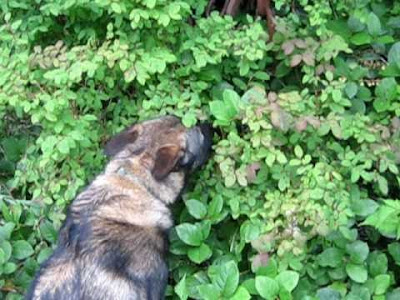








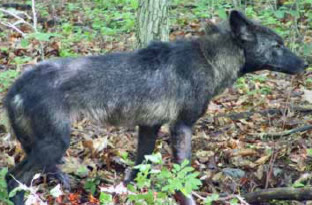




 The open season on coyotes is legal, so any disagreements I have with hunters — and that includes a brother and nephews who do so — is purely a personal one. But holding coyote tournaments with a cash payout or big prizes for the carcasses brought in? I have a big problem with that. It is, well, barbaric.
The open season on coyotes is legal, so any disagreements I have with hunters — and that includes a brother and nephews who do so — is purely a personal one. But holding coyote tournaments with a cash payout or big prizes for the carcasses brought in? I have a big problem with that. It is, well, barbaric.

















